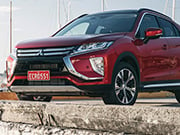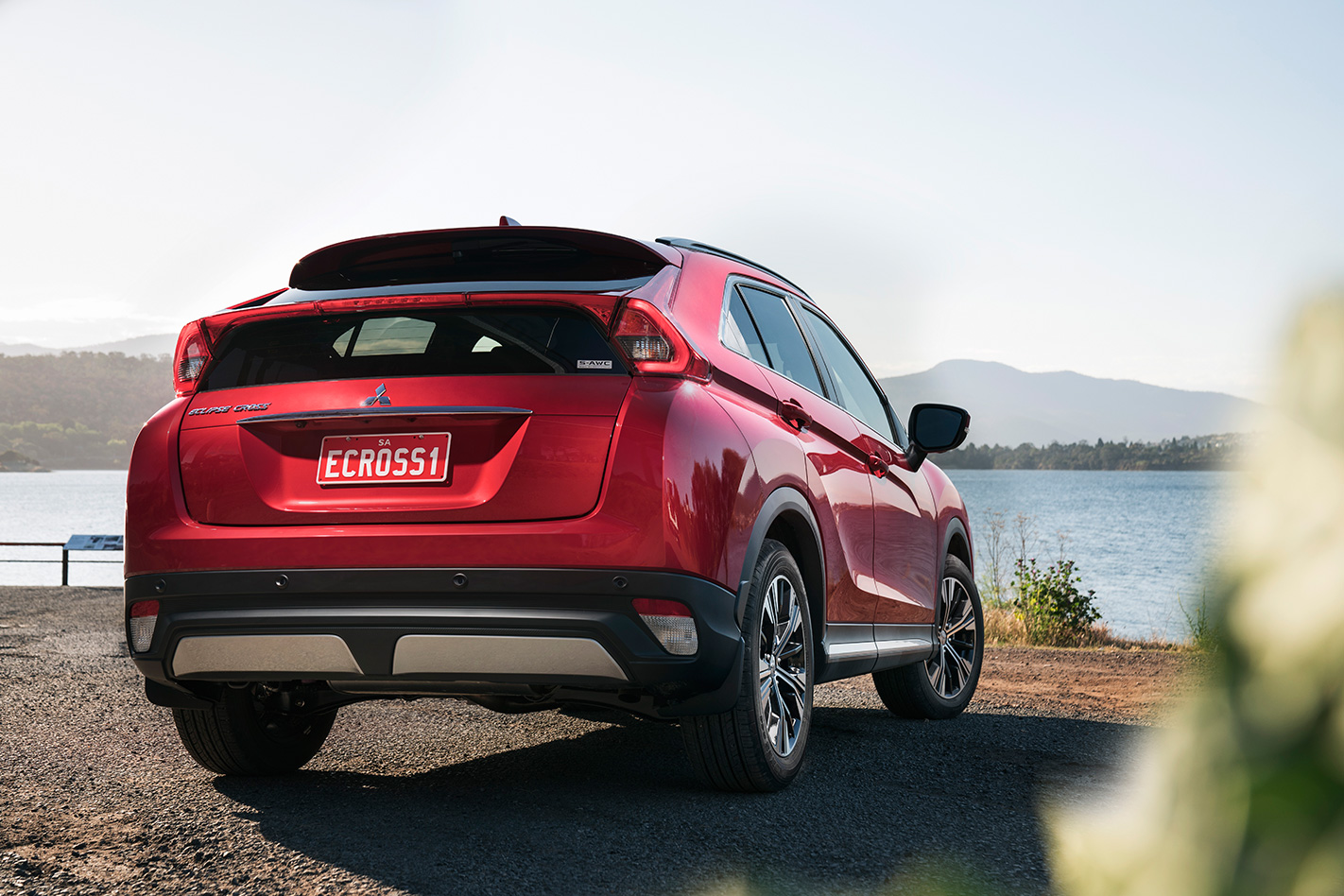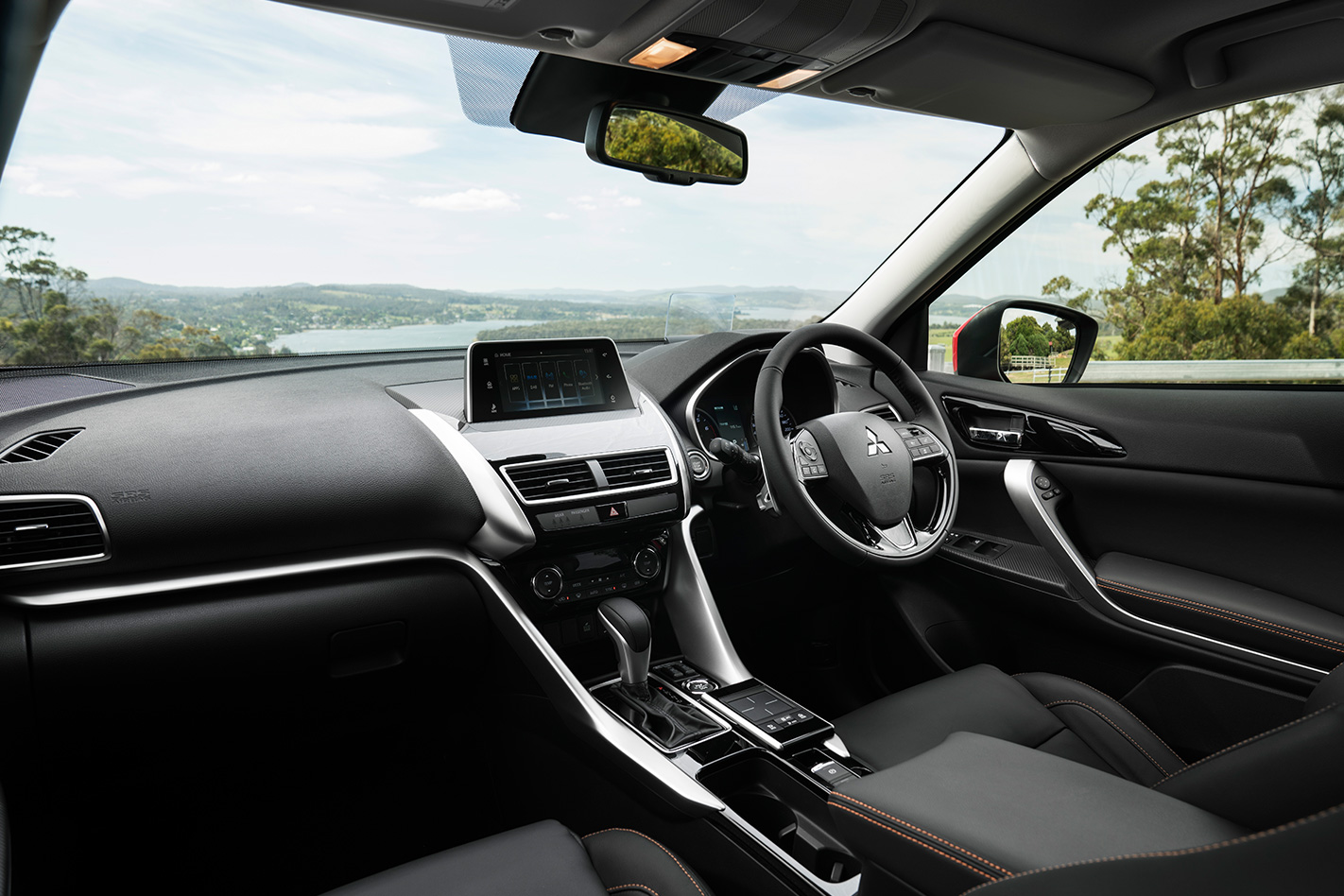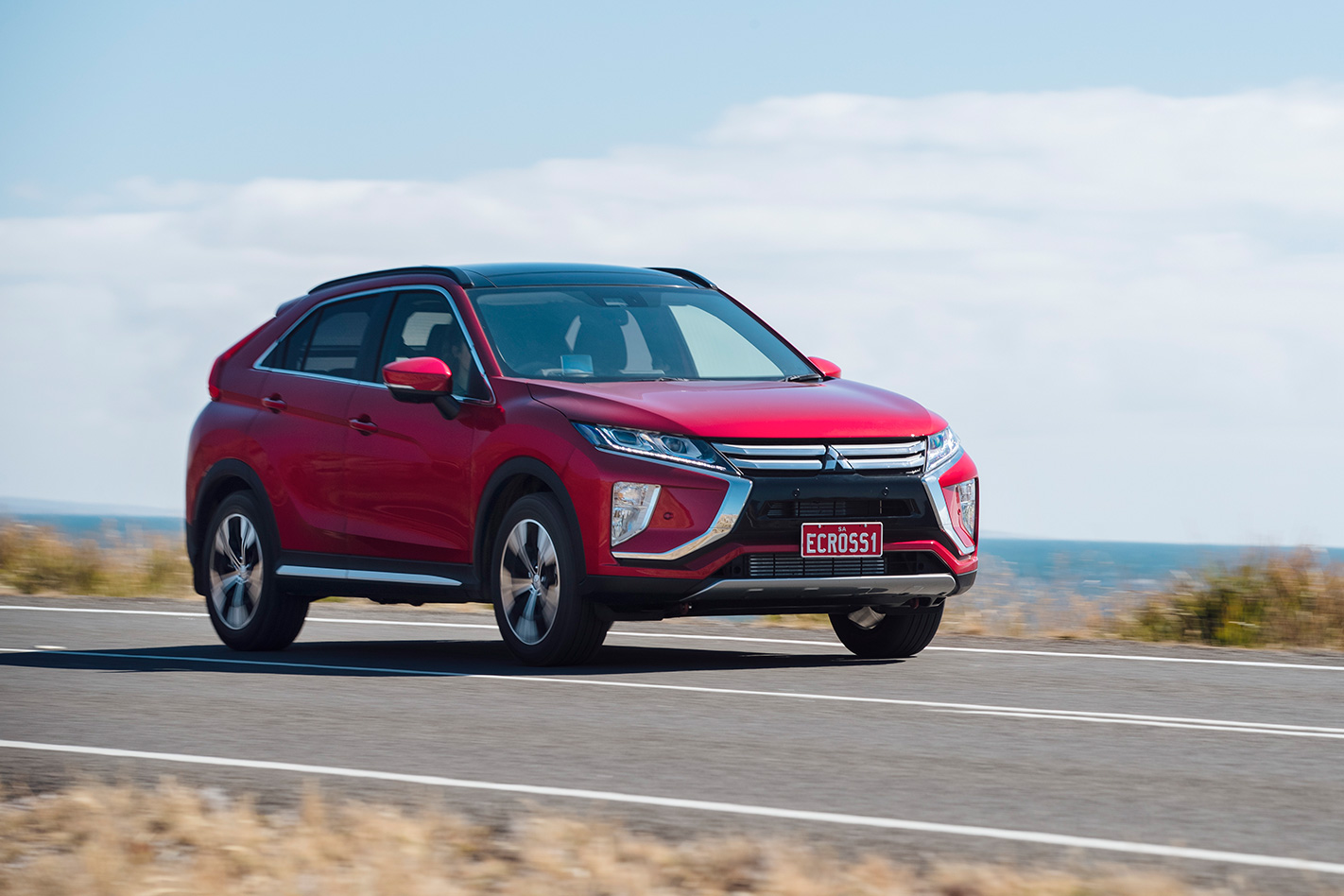
The Mitsubishi Eclipse Cross is another model slotting into the Japanese car maker’s already SUV-heavy line-up that picks up its successful formula, albeit with a more modern edge.
TELL ME ABOUT THIS CAR
You wouldn’t know it to look at them, but Mitsubishi decided there was room to slot another vehicle in between the large-for-its-class ASX and the small-for-its-class Mitsubishi Outlander. This job was given to the Eclipse Cross, a more edgy looking, design driven soft-roader that shares the same “GS” platform as the ASX and Outlander.
The main point of difference the Eclipse Cross holds over is stablemates is the value for money that it represents.
STRENGTHS
- The Mitsubishi Eclipse Cross is big for the segment in which it competes. Classed as a small SUV, it makes some of the competition look cramped. You’ll notice that as soon as you open up the boot to reveal up to 1193 litres of boot space with the rear seats folded down.
- The Eclipse Cross adopts the Mitsubishi Dynamic Shield face that’s slowly spreading across the range.
- The rear seats are teenager-friendly. If you’re not loading up the boot, the rear seats can slide backwards up to 200mm, and the seatbacks can recline. The coupe-like profile doesn’t rob the rear seats of headroom.
- All three variants come with automatic emergency braking, lane-departure warning, and auto high beam, wipers and headlights, making it safe and user-friendly.
- It’s well equipped. The entry-level front-drive LS comes with 18-inch alloys and digital radio for $30,500. The mid-spec Exceed (also front-drive) adds dual-zone climate, leather trim, heated and powered front seats, a head-up display, LEDs and a safety suite, for $36,000. The range-topping Exceed AWD asks another $2500 over this for all-wheel drive and a three-mode terrain selector that increases off-road ability.
- The engine is pretty perky for what it is. The Eclipse Cross uses a 110kW/250Nm turbocharged 1.5-litre engine to haul 1335kg of SUV around, with a continuously variable transmission helping to keep it in either its peak power or maximum economy band.
WEAKNESSES
- Fuel economy isn’t as good as claimed. The official figure is 7.3L/100km, but real-world use on test flicked above 8.5L/100km, even with mostly freeway work.
- It still feels cheap inside. Soft-touch surfaces cover most of the areas in the line of sight where a hand or elbow fall, but they don’t scream plushness. Hard faux brushed chrome plastics don’t add to the sense you’re buying a cut above the competition.
- A central touchpad is used to control the multimedia interface. It’s fine while the Eclipse Cross isn’t moving, but once it does, forget it.
- The head-up display is way too low for taller drivers. Even on its most elevated setting, a taller driver will have to duck down to see it, sort of defeating its purpose.
- It rides and handles like the other cars that share its platform. That means it is more suited to milk runs and commuting than an expression of the joy of driving.
- The split rear window is form over function. The top pane houses the world’s smallest windscreen wiper, and the bottom one isn’t visible over the rear seatbacks. A reversing camera helps.
- The continuously variable transmission isn’t as nice as a conventional automatic transmission, but is well-suited to the small engine. The Eclipse Cross has paddle shifters on the steering wheel to mimic an eight-speed conventional auto, but it’s not the same. If the paddle shifter doesn’t want you to shift gears it lets out an angry beep.
- The less pricey Mitsubishi ASX is a 50 cent coin’s length smaller than the Eclipse Cross, more than $5000 cheaper and offers a similar amount of interior space – and more when it comes to the boot. And yet the way the cheaper ASX soaks up the road isn’t that much different.
ANY RIVALS I SHOULD CONSIDER?
Nissan Qashqai; Holden Trax; Hyundai Kona; Honda HR-V; Mazda CX-3; Mitsubishi ASX; Subaru XV; Toyota C-HR


